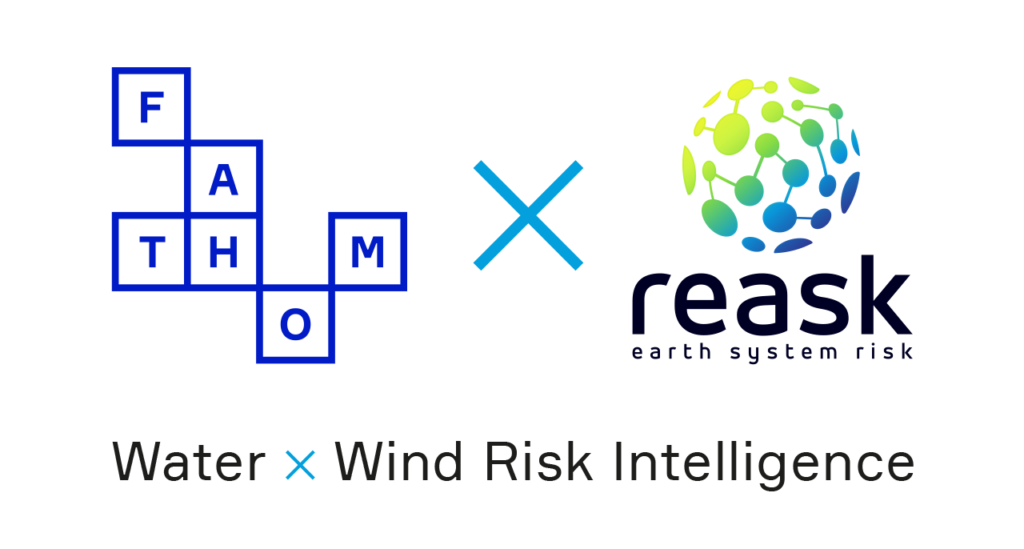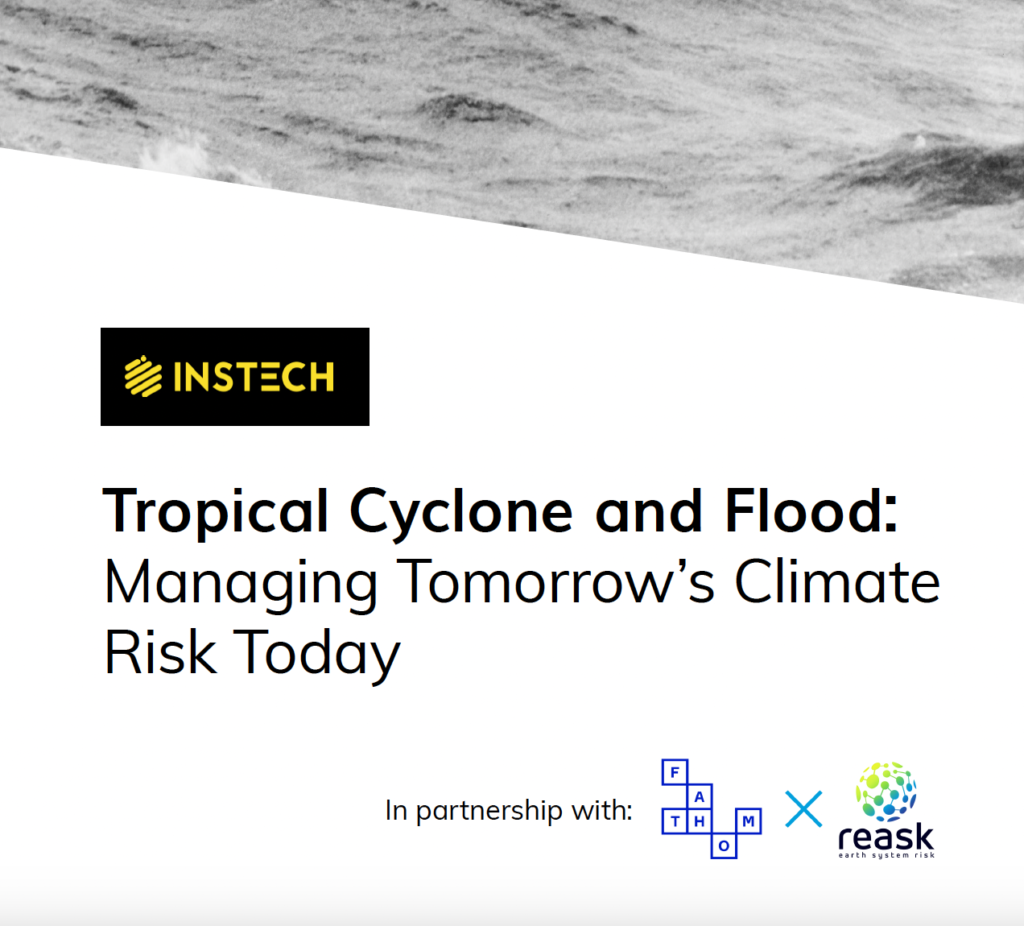
Report and podcast from Fathom X Reask in partnership with InsTech
In 2022, Fathom announced a partnership with leading atmospheric hazard modelers, Reask. This collaboration brings together the world’s leading flood and tropical cyclone scientists to develop combined risk models and data for the insurance, financial markets and engineering sectors.
Shortly after the announcement, we joined forces to co-host an event in London with InsTech on our partnership, titled Tropical Cyclone and Flood: Managing Tomorrow’s Climate Risk Today.
Panel at the event featured industry leaders who reviewed the key drivers of climate change. The 150 delegates heard how insurers are taking account of climate icsk in underwriting and portfolio management.
Alongside Fathom’s Dr Andy Smith and Dr Ollie Wing, The event featured speakers from the Reask team together with expert customers from across the industry:
- Jamie Rodney, CEO, and Thomas Loridan, Co-founder and Chief Science Officer, Reask
- David Vicary, Research and Development Manager, Brit Insurance
- Rob Porter, Product Director, VAVE
- Sue Barenbrug, Independent Consultant
- Paul Wilson, Partner, Securis Investment Partners LLP
- Kris le Sage de Fontenay, Vice President, Insurance Leader UK, Capgemini
- Dickie Whitaker, CEO, Oasis Loss Modelling Framework
One of the most memorable sections of the event was from our Chief Research Officer, Dr Oliver Wing, featuring a cameo from his Double Doodle puppy, Jasper. You might have seen some snaps of Jasper featured on our Fathom LinkedIn page. Read on for an insight from the event that uses Ollie’s walks in the park with Jasper to explain climate change vs natural variability, or listen to the podcast of the event to hear the interview in full.
Climate change vs natural variability
Explaining natural variability – #JasperInThePark
The world is warming and with it the frequency and intensity of catastrophic events. In the near term, the signal from this long-term trend is quite small compared to natural variability. Regulators, investors and insurers are interested in understanding long-term climate change, but it is natural variability that is causing losses in the short term. Fathom’s Chief Research Officer, Dr Oliver Wing, brought the difference between these two trends to life using his puppy, Jasper, to illustrate:
“When trying to explain the difference between climate change and natural variability, I like to think of walking my dog, Jasper. When I leave my house, the route I walk can be thought of as representing the long-term climate trend of global warming. As soon as I let Jasper off the lead, he’s off. At any given moment I don’t know where he will be; he could be ahead of me, behind me or right next to me. Jasper’s movements represent the unpredictable variations in natural climate variability.
My route is very predictable; I walk at a steady, consistent pace. Meanwhile, Jasper could be way off in the park chasing a rabbit. The climate equivalent of this could be a volcano erupting and cooling the climate or the consequence of an El Niño phase having an impact in a single year. These events are what is driving insurance losses. With the Fathom and Reask partnership, we are beginning to try to pin down the short term climate equivalent of where Jasper is at any one time during our walk.”
– Dr Oliver Wing, Chief Research Officer, Fathom
Ollie continued to explain that for longer-term business decisions, organizations are more interested in the overall trend of climate impacts. Hazards such as sea level rise are best predicted by Ollie’s walking route, which represents average climate change. More acute perils, such as hurricanes, are more responsive to natural variability in any given year. Many of the most recent climate risk tools focus on understanding the average changes in events, but as catastrophe modelers, Fathom and Reask are interested in the extremes. The partnership is aiming to help insurers understand how natural variability, or Jasper running around, is driving annual industry losses.
Read Ollie’s full explanation of how walking Jasper in the park can be used to explain the differences between climate change and natural variability.
Another aspect that is impacting flood losses is demographic shifts. In a 2022 research paper, Fathom used satellite data to explore how urban footprints have changed since the 1980s. The research found that there are now twice as many urban areas within floodplains globally. Ollie explains that for those that are only interested in their organization’s current property portfolio, understanding socioeconomic changes is less relevant. However, to understand which properties in what locations an insurer may want to underwrite in the coming decades, watching demographic changes is vital. Notably, Fathom’s research shows that changes in exposure have a greater impact on risk than changes in the hazard itself as a result of global warming.
You can find out more about Fathom’s upcoming events, both in person and online, by visiting our events page. If you’re interested in learning more about compound hazards, such as the combination of flood and cyclone risks, check out our CPD-accredited webinar in partnership with CIWEM: Exploring the impact of compound flood risk and extreme events.
In partnership with


ReportDownload the report: Tropical Cyclone and Flood: Managing Tomorrow’s Climate Risk Today
For further insights from Brit Insurance, Vave, Reask, Securis Investment Partners and Oasis Loss Modelling Framework, complete the form to download the full report.


